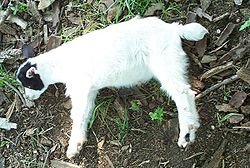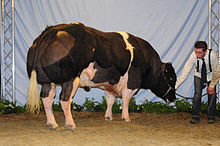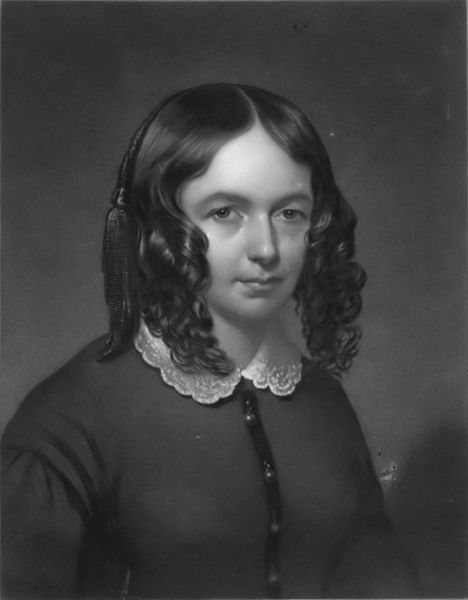The function of muscle is to pull and not to push, except in the case of the genitals and the tongue.
Leonardo da Vinci
The three main types of muscle are skeletal muscle, which is anchored by tendons to the bone and is consciously used to move the body, involuntarily muscle (also known as smooth) which moves without any conscious thought, such as in the intestines, and then there is the heart (cardiac) muscle.


Muscle diseases, known as muscle myopathies (Gr. myo; muscle), occur when defects in proteins important for muscle fibres (Muscular dystrophys), in mitochondrial funtion (myopathies), disruption of electrical impulses across muscle cell membranes, (myotonic congenita, myotonic dystrophy and hypokalemic periodic paralysis), motor neurons connecting with muscle fibres (amyloid lateral sclerosis and spinal muscular atrophy) can all affect the function or survival of muscle cells.
In contrast, some genes can result in increased muscle growth (myostatin) or function (ACNT3).
Myotonia Congenita

Myotonic disorders (Gr. myo; muscle, tonic; strength) are characterised by muscles which can contract normally but have decreasing power to relax leading to muscle stiffness in the limbs and, typically, an inability to release the handgrip rapidly. These diseases result from a block in the flow of electrical impulses across the muscle cell membrane; without the proper flow of charged particles the muscle cannot return to its relaxed state after it has contracted. Generally, this results in
One form, known as Thomsen’s myotonia congenita, is caused by inheriting a mutation in a gene affecting the function of a chloride channel that regulates the flow of ions across the membrane in cells and is a key component in a variety of biological processes involving rapid changes in cells such as in muscle contraction. It is named after the Danish physician Dr Julius Thomsen who, in 1876 provided the first documented account of a myotonic disorder which he discovered in himself! He was supposedly highly sensitive about his familial condition, and it was only in response to accusations that the youngest of his three affected sons was trying to avoid military service, that he was provoked into publishing his article describing how he could trace back the condition to his maternal great-grandmother born in 1742.
There is a breed of domestic goat with a similar myotonia congenita. Known as the fainting goat, their muscles freeze for roughly 10 seconds when the goat is startled, causing the animal to collapse on its side.
Muscular Dystrophys
Duchenne 1:3500
X-linked
Duchenne and Becker muscular dystrophy (Gr. dys; painful/difficult, –trophy; nourishment/development) are the most common inherited forms of progressive muscle weakness and wasting symptoms. Both result from mutations in the same gene, the dystrophin gene on the X chromosome that produces a protein that strengthens muscle fibers.
The more severe Duchenne results from mutations that prevent any functional dystrophin protein from being produced, while the milder Becker mutations still allow for the protein to retain some function. The symptoms for Duchenne start around 3-7 years old with difficulties in standing up and walking, which worsens with most patients confined to a wheelchair by age 12 and dying of respiratory complications by age 20. Becker results in milder symptoms and a later age of onset with patients surviving into their 40s.
Alfredo (affectionately known as Dino) Ferrari was born in 1932 and suffered from Duchenne muscular dystrophy. Although leaving him very weak he continued to work with his father Enzo at his Ferrari car manufacturing company on the development of a 1.5 L DOHC V6 engine for F2, which was later renamed in his honor when he passed away at the age of 24. After his death, his father Enzo then founded the Dino Ferrari Foundation in Milan, which is one of the most important research centers in the world for muscular dystrophies.

Myotonic Dystrophy
Autosomal dominant
1:30,000
Myotonic dystrophy is characterised by a wasting and weakness of muscles in the arms and legs. The face often develops a mask-like expression, typically with eye drooping (ptosis), though symptoms can vary considerably.


It has been suggested that the pharaoh Akhenaton, of the Eighteenth dynasty of Egypt, had MD. Reigning from around 1350 BC artistic representations of him portray a strikingly bizarre appearance, with a long face, thin and hollow cheeks, a half-open mouth and lowered eyelids known as ptosis.
The Greek military commander and national hero Alexander Ypsilantis (1792-1828) has been suggested to have suffered from myotonic dystrophy. His portrait on a stamp shows drooping eyelids, severe weakness and atrophy of the face muscles. His younger brother Demetrious, also a hero in the struggle for independence against the Turks, suffered from the similar ailment in addition to other brothers and ancestors of his.
Another symptom of myotonic dystrophy are the development of cateracts. Interestingly, a late relative of Claude Monet when presenting with cateracts, in addition to mild muscle weaknes, was found to have a myotonic dystrophy mutation, leading one to suspect the cateracts of Monet himself may well have been a manifestation of this disease.

Myostatin

In contrast to gene defects leading to muscle loss or weakness, some genes, when altered, can lead to increased muscle strength and growth.
Belgian Blue cattle contain a mutation dysrupting myostatin’s normal role of limiting muscle growth. As a result they produce a third more muscle than normal cows.


One child was recently born in Germany inheriting the human form of the same mutated gene and was consequently born with excessive muscle growth in the arms and legs. This myostatin gene was first discovered by scientists in a particular strain of mutant mice, subsequently named mighty mice, that had twice as much muscle as normal. It appears that dog breeders have been inadvertently selecting for this same gene for many years in whippet racing. A study showed that a high number of dogs in the top racing classes had one copy of this mutant gene. Dogs that inherit two copies of the mutant gene are particularly muscular and are known in the whippet-breeding community as bully whippets which, contrary to the name and appearance, have a very placid temperament.
In addition to myostatin there seem to be many other gene mutations that can lead to increased muscle growth and strength. One gene known as ACTN3 codes for a protein found only in fast twitch muscle fibres and that is more active in professional sprinters. Endurance athletes tend to contain a mutated version of this gene.
Amyloid Lateral Sclerosis
1:50,000-100,000
Motor neurons connect the spinal cord and brain with muscle fibres to allow muscle contraction. For muscles to function, grow and survive they must be constantly stimulated by the motor neurons; if not, the muscles weaken and waste away. Diseases resulting in the death of motor neurons result in a progressive paralysis of the body, often starting in the hands and feet and proceeding up the arm or leg, and also spasticity where muscles twitch, become tight and spasm.
Amyotrophic Lateral Sclerosis (Gr. a; absence, myo; muscle, trophic;nourishment), often known as motor neuron disease or Lou Gehrig’s disease in the US, due to the suffering by legendary baseball player, affects about 1 in 30,000. While most cases seem to appear at random, some inherited cases are the result of mutations in a gene important for clearing free radicals from cells. Different mutations in this gene affect the age symptoms begin and how fast the disease progresses: either rapid deterioration in later life or more gradual symptoms in early life.


David Niven’s symptoms appeared at the age of 70 and he died just 3 years later. This was first noticed by the public when his developing slur during an interview for the BBC in 1981 led many viewers to assume he was drunk.

There seem to be numerous environmental risk factors for developing amyloid lateral sclerosis. For example a number of professional Italian soccer players have suffered with suggestions that heading footballs or pesticides on soccer fields ay play some role.
Stephen Hawking developed the disease at the young age of 21 and has been living with the condition for over 40 years. Underlining the fact that motor neuron diseases have no effect on mental abilities, Stephen Hawking still holds the post of Lucasian Professor of Mathematics at Cambridge University since 1979.

Spinal Muscular Atrophy

The most commonly occurring motor neuron disease is Spinal Muscular Atrophy (SMA) and though 5-times more common than ALS, it receives little publicity due to the fact that most affected people die very youngThere are three main types of spinal muscular atrophy. The acute type usually results in death within the first year, while a less severe form presents between the ages of 5 and 15 years with a comparatively slower progression of weakness. However, as with most genetic diseases of this type, rate of progression of symptoms and life expectancy are variable with some sufferers surviving into adulthood.
Ami Ankilewitz long outlived his predicted life expectancy. Working as a 3D animator in Israel, at the age of 36 he created and stared in an award winning documentary, “39 Pounds of Love”, chronicling his pursuit of a lifelong ambition – an American road trip to find the doctor who predicted he would not live more than a few years.
Hypokalemic Periodic Paralysis
1:100,000
Autosomal dominant
Hypokalemic periodic paralysis is an inherited condition resulting in intermittent episodes of muscle weakness and sometimes paralysis usually lasting less than a day.
The disorder results from mutations to genes coding for calcium channels that mediate calcium influx and movement in response to membrane depolarisation and muscle cell contraction.
Often induced by strenuous exercise followed by rest, foods with high levels of carbohydrate or sodium or sudden changes in temperature, the muscle reflexes decrease and go limp – particularly shoulders and hips.

The English poet Elizabeth Barrett Browning (1806–1861) is thought to have suffered from this disease describing in her diary overwhelming weakness after fasting or exercise “Very unwell – could scarcely get down stairs, my legs trembled so much.” This may have lead to her self prescribing opiates from an early age with suggestions that this may have greatly influenced her style.
